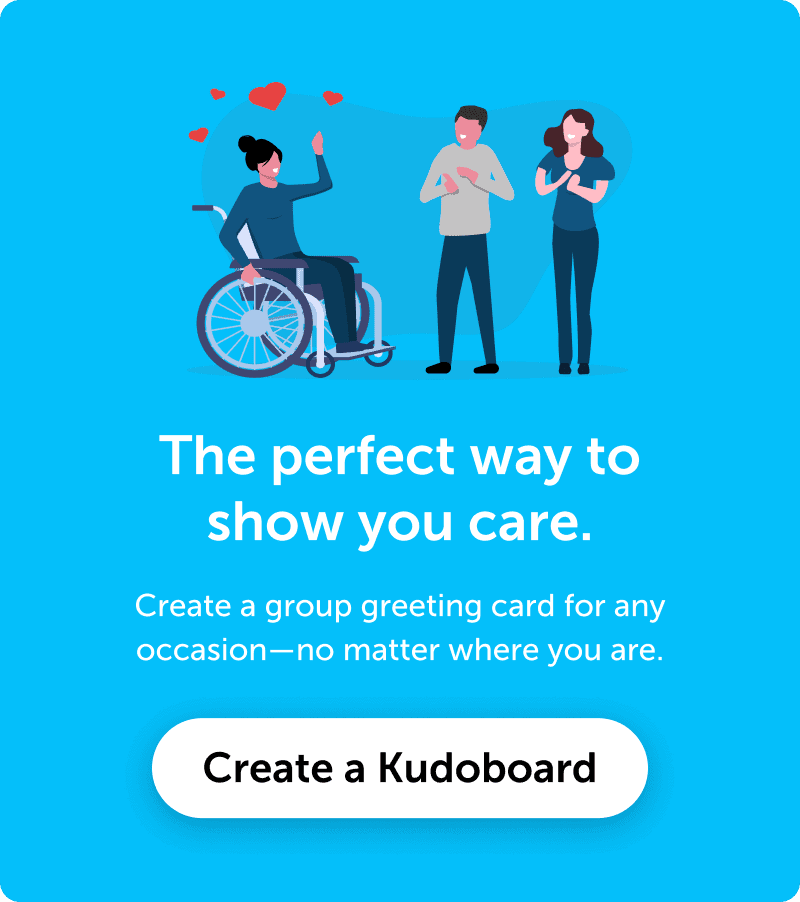If you are connected to a company’s workforce in any way then you have likely heard the following three letters mentioned often: DEI.
These letters stand for Diversity, Equity, and Inclusion, and are each vital to any work environment. Topics like these, though to some might boil down to nothing more than trendy buzzwords, provide a crucial foundation for a prosperous society – both in the workplace and outside of it. To create a diverse workforce and environment that is welcoming and accessible to all, DEI initiatives are becoming common solutions to a problem that is deeply rooted in our history. As companies become more intentional about how they approach DEI initiatives and prioritize them in their employee experience strategy, we will begin to see why we need DEI initiatives in the workplace. Before reaching that conclusion, however, let’s first look at what diversity, equity, and inclusion mean within a workplace context.

DEI Initiatives: Diversity
Workplace diversity refers to the variety of individuals that make up a company and their identities and characteristics. It places an intentional focus on ensuring a wide range of perspectives and experiences in the hiring and employment process. A diverse pool of talent includes welcoming differences in things like:
- Age
- Gender Identities
- Race
- Ethnicity
- Sexual Orientation
- Physical Abilities/Disabilities
- Religious Beliefs
- Socioeconomic Backgrounds
- Learning difference
DEI Initiatives: Equity
Equity in a company looks like ensuring equal opportunities for all employees, regardless of differences, and without discrimination. Often equity is confused with the idea of sameness; ensuring that everyone is given the same thing. Instead, equity is about fairness and leveling the playing field. For example, let’s say three people are required to attend an event, but each needs a way to get there. The first is a middle-aged adult, the second is an adult in a wheelchair, and the third is a child. If we were focused on sameness instead of fairness, we could provide them each with a car to drive. The first person would most likely have no trouble getting to the event as they likely know how to drive a car and are physically able to do so. The second person would have more trouble with that plan, especially if the car provided did not have accommodations for the wheelchair and the individual’s physical limitations. There is simply no chance it would work for the child to be supplied with a car and expected to drive themself there.
This is where equity comes in – rather than giving each person the same thing and expecting it to work, each person is instead given an equal chance to arrive at the event safely, according to their specific needs. The first adult could still be provided with a car to drive, but the individual in a wheelchair could instead be scheduled to use a rideshare option. The child could also use a rideshare option, but depending on their age they might require to also have an adult present with them. The result is the same- helping each of them attend the event -but the process of how they get there will vary according to needs and circumstances.
In a work setting, equity is all about understanding the unique needs of your diverse workforce and then providing equal and fair access to each aspect of a positive employee experience. Employers use equity training to find ways to remove systemic barriers that still hold back groups like people of color, women, those with disabilities, and the LGBTQ+ community.
DEI Initiatives: Inclusion
Workplace inclusion takes the first two topics and then shapes them into an environment where everyone feels safe, valued, respected, and included. Much of an organization’s company culture is based on its levels of inclusion. It is one thing to say that you value company-wide diversity and express commitment to providing equal opportunities for all employees – and another for your employees to feel like those statements are true. Rather than talking about what to do, inclusion requires companies to actively create a work environment where employees feel a sense of belonging and know they are safe to communicate, innovate, and be authentic without fear of being excluded or facing discrimination.
The History of DEI
Many are familiar with DEI as explained above and have a general idea of why it is valuable in a work setting. Real change, though, comes from education and understanding, and if we want to see DEI initiatives succeed in making a better workplace for everyone, then we need to understand how we got here in the first place. DEI has been gaining momentum in the last decade but its history goes back long before that. Here is a summarized look at 4 movements in our history that paved the way for DEI initiatives to evolve into what we see now:
- The Civil Rights Movement
During the 1950 and 1960s, the United States experienced a historical shift in the fight for equal rights for African Americans. As we worked to get rid of segregation and create a better society for all participants, though it was hard-won and still not over, we received the Civil Rights Act of 1964 which prohibited the discrimination of anyone based on color, race, national origin, religion, or sex. This paved the way for demanding equality in the workplace that we see today.
- The Feminist Movement
In the following ten years, from about 1960-1970, we saw a fight for gender equality emerge from the feminist movement. There was a big push for women to have equal access to things men had been freely given, such as education, employment, and reproductive rights. Within the workplace, this created discussions around gender diversity, inclusivity, and equality that are still happening today, 50 years later.
- The Disability Rights Movement
As more people began to speak up about the discrimination they faced because of their disabilities between the 1970-1990s, many environments were forced to face how little they provided equal access and opportunity to those with disabilities. This snowballed into the disability rights movements and formed various advocacy groups to create more equal opportunity and inclusion for those with disabilities. The groups and laws that have come from these efforts have been vital to DEI efforts today
- LGBTQ+ Rights Movement
The rights and acceptance of LGBTQ+ individuals have been heavily fought for alongside the others listed above. From roughly the 1960s until the present day, activists have tirelessly fought to have legal protection from discrimination in all areas of life. Because of the support of this movement, there has been more awareness and conversation concerning gender identity, sexual orientation, and how to create more inclusivity in the workplace. DEI training for employers has been an important part of making this happen.
What are DEI Initiatives?

DEI efforts and initiatives are the efforts of a company to promote diversity and equity and build a company culture in which each employee feels safe and included. This desired work environment is shaped by various DEI practices and programs that cater to the unique differences within the organization. Some initiatives commonly seen are:
- DEI Training and Education
- Employee Resource Groups (ERGs)
- Mentorship Programs
- Fair Recruiting and Hiring Practices
- Celebration of Diverse Holidays
- Leadership Accountability
Why You Need DEI Initiatives in the Workplace
Having a DEI strategy for implementing initiatives is necessary for any company or organization. When leadership is not committed to removing harmful bias and improving the culture for all its participants, the entire company will be impacted. We’ve compiled a list of 3 reasons why you should implement DEI practices in your organization:
- Talent Acquisition
Managing an organization’s talent acquisition and hiring process is a complex feat, but it must be done through a lens of equity and inclusion initiatives. When a company’s DEI goals focus on designing the hiring process to be more inclusive they will broaden their talent pool to include diverse candidates they might have missed. If your company is made up of individuals from many different backgrounds, gender, abilities, etc., it means that you are better able to understand and meet customers’ needs. Your company will have access to far greater ideas and creativity. Not only that, but it looks much more attractive on the applicant side of things as well. This survey shows that 80% of workers want to work for organizations that value diversity, equity, and inclusion. By prioritizing DEI policies you will attract more talented employees to your team. For applicants who have experienced discrimination in past jobs, finding a company that actively prioritizes DEI practices and seeks out diverse talent will be an attractive option.
- Performance and Profits
DEI efforts are not only going to show the public that you are committed to doing the right thing, but they will also have an impact financially as well. Companies that are more diverse have been shown to perform better financially than other less-diverse teams. In fact, organizations with strong DEI strategies saw a 56% increase in job performance, and a 2019 study showed that companies were 25% more likely to have above-average profits if they ranked high for gender diversity. When every employee looks, thinks, and acts the same, there is a measurable lack of innovation and elevation that will occur. Having diverse leadership and employees allows a company to draw on greater representation, creativity, innovation, and talent, which will transform the bottom line.
“Highly inclusive companies are more likely to hit their financial target goals by up to 120%”
Claire Schmid
- Workplace Engagement
If you have a company that is proving its commitment to DEI initiatives through words and actions, it will naturally have a large impact on engagement among employees. Creating a fair and safe work environment where employees feel valued, respected, and heard will evolve into a breeding ground for engagement, job satisfaction, and strong retention rates. a DEI strategy often used is the creation of employee resource groups (ERGs), which are basically networks of support for like-minded employees who share common social identities. There are often ERGs for groups of women, BIPOC, disabilities, or LGBTQ+. When employees feel a sense of belonging and support, they will naturally feel more engaged and motivated in their work. Prioritizing DEI in the workplace is a powerful way to make that happen.
Initiatives for All
Creating an inclusive workplace won’t happen overnight. It will take organization and commitment from leadership, but it can be done. The benefits that come from investing in DEI training and creating company-side diversity will not only come in the form of those listed in this article but will also have a powerful impact on the way future generations of employees will expect to be treated in the workplace.





